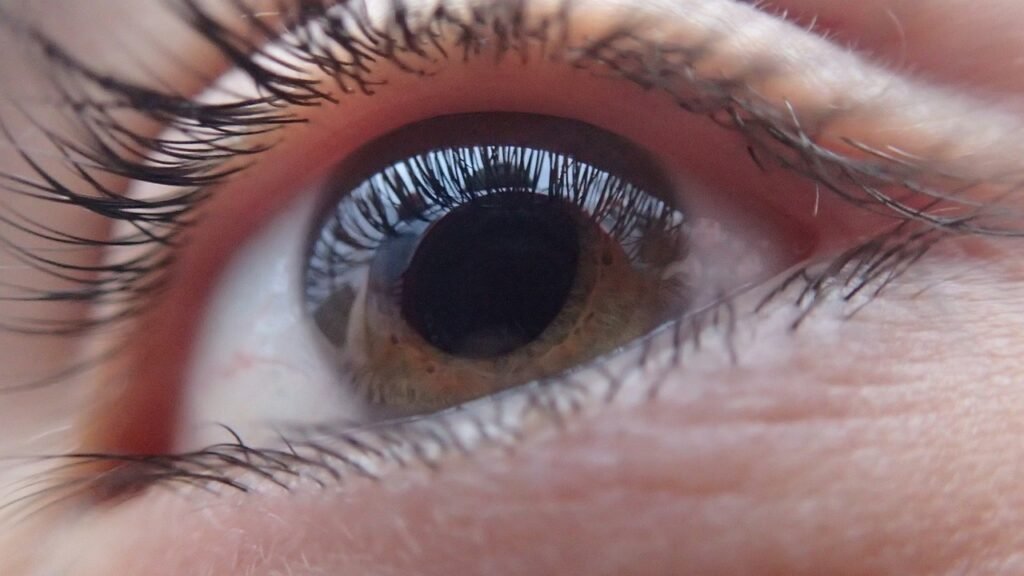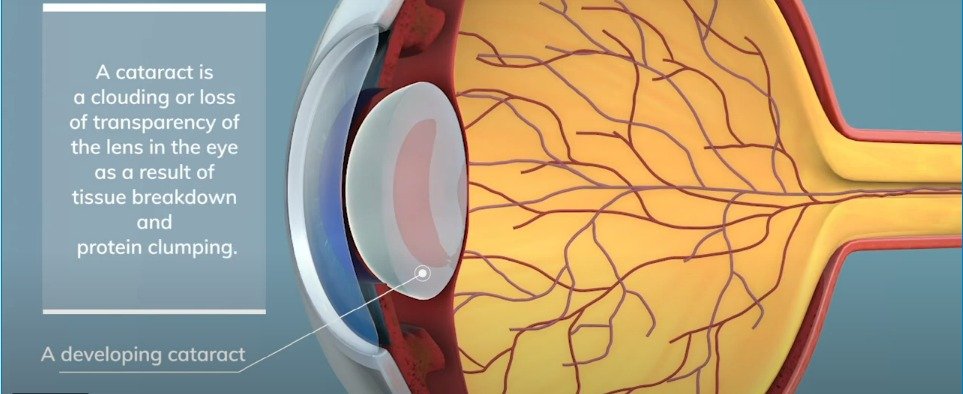Introduction to Cataract
Cataract stands among the most prevalent eye diseases, characterized by the opacity of the crystalline lens of the eye, leading to impaired vision.
Understanding Cataract
Cataract, derived from the Latin word “cataracta,” meaning waterfall, refers to the clouding of the eye’s lens, hindering the passage of light and causing blindness over time.
Symptoms of Cataract
The initial sign of this can often manifests as blurred vision, gradually progressing to double vision, spots, and ultimately, complete blindness. Patients may also experience a grayish-white discoloration in the pupil.
Do’s and Don’ts After Cataract Surgery: Your Complete Guide
Cataract surgery is a common procedure to improve vision affected by cataracts, but proper care after surgery is crucial for optimal recovery. Understanding the do’s and don’ts post-surgery is essential to ensure a smooth healing process and minimize the risk of complications. In this comprehensive guide, we’ll discuss the restrictions and precautions you should follow after cataract surgery, along with answers to frequently asked questions.
Rest and Precautions
After cataract surgery, it’s vital to allow your eye to rest and avoid activities that could strain or irritate it. Here are some important precautions to follow:
Don’t:
- Drive until your ophthalmologist clears you to do so.
- Wear contact lenses.
- Rub or scratch your eye.
- Swim, use saunas, or hot tubs.
- Get soap or water in your eye.
- Wear eye makeup.
- Engage in strenuous exercise or heavy lifting.
- Use face cream or lotion near your eyes.
- Color or perm your hair for 1–2 weeks.
- Dust or garden.
Do:
- Use prescribed eye drops as directed.
- Wear dark sunglasses when outdoors.
- Use a protective shield over your eye while sleeping as recommended by your doctor.

How Long to Rest and Precautions to Take
You may need to rest for a day following surgery, but you’ll likely feel better the next day. However, certain precautions should be followed for a few days up to several weeks to ensure proper healing. These include avoiding activities like driving, swimming, and using eye makeup, among others. Your ophthalmologist will provide specific guidelines tailored to your recovery.
Various factors contribute to the loss of lens transparency, including stagnation of blood circulation, nutritional deficiencies, deposits between lens fibers, and toxins in the bloodstream resulting from poor diet and lifestyle choices.
Understanding Childhood Cataracts: Symptoms, Diagnosis, and Treatment
Cataracts are often associated with aging, but they can also affect children, leading to vision impairment if left untreated. In this comprehensive guide, we’ll explore everything you need to know about childhood cataracts, including symptoms, diagnosis, treatment options, complications, risk factors, and outlook.
Childhood Cataracts: An Overview
Childhood cataracts, also known as congenital or juvenile cataracts, are cloudy patches that develop in the lens of the eye. While some children may not exhibit any symptoms, others may experience noticeable vision impairment. Childhood cataracts can occur in one or both eyes and may lead to permanent vision changes if not addressed promptly.
Symptoms of Childhood Cataracts
Signs of childhood cataracts may include poor vision, white or gray pupils, and eyes that point in different directions. Rapid, uncontrolled eye movements are also common indicators of cataracts in children. Recognizing these symptoms early is crucial for timely intervention and treatment.
Diagnosis and Treatment Options
Diagnosing childhood cataracts typically involves a thorough eye examination by a pediatrician or ophthalmologist. During the newborn exam or routine physical, doctors may check for the presence of cataracts using a red reflex test. If cataracts are suspected, further evaluation by an eye specialist is recommended.
Treatment for childhood cataracts often involves surgical removal of the affected lens followed by the insertion of an artificial lens. In some cases, contact lenses or glasses may be prescribed to correct vision changes post-surgery. Prompt treatment is essential to prevent long-term complications and ensure optimal visual outcomes.
Complications and Risk Factors
Without timely intervention, childhood cataracts can lead to permanent vision problems, including lazy eye (amblyopia) or blindness. Complications of cataract surgery may include glaucoma, posterior capsule opacification, pupil abnormalities, and retinal detachment. Certain factors, such as genetic conditions and prenatal infections, increase the risk of childhood cataracts.
Understanding Cataracts: How Long Does It Take to Go Blind?
Cataracts, though often associated with aging, can lead to blindness if left untreated. While age-related cataracts usually progress slowly, other types can cause vision loss more rapidly. In this article, we delve into the progression of cataracts, the risk of blindness, preventive measures, and treatment options.

Impact on Vision
The gradual clouding of the eye’s lens due to protein clumps, known as cataracts, can significantly impair vision. Symptoms may include blurred vision, halos around lights, faded colors, sensitivity to light, and poor night vision. While age-related cataracts typically develop after age 40, they can affect adults as young as 45–50 years old.
Potential for Blindness
Untreated cataracts can lead to blindness over time as protein clumps accumulate, causing vision problems to worsen. Although age-related cataracts progress slowly, other types, such as traumatic or radiation-induced cataracts, can cause sudden vision loss if not promptly addressed.
Sudden Blindness and Prevention
Traumatic cataracts resulting from eye injuries or radiation exposure can lead to sudden blindness. However, preventive measures such as wearing sunglasses, using protective eyewear, avoiding smoking, maintaining a healthy diet, and limiting alcohol intake can help reduce the risk of cataracts and associated blindness.
Reversing Blindness with Treatment
Cataract surgery, a common and effective treatment, involves removing the clouded lens and replacing it with an artificial one. This procedure can restore vision in individuals with cataract-induced blindness. Regular eye exams are essential for monitoring cataract progression and determining the appropriate time for surgery.
Traditional Treatment Approaches
Conventional medical treatment for this can be typically involves surgical removal of the affected lens followed by the use of corrective glasses to restore vision.
Natural Remedies for Cataract
In addition to surgical interventions, natural remedies and dietary modifications offer promising alternatives for managing this and preventing its progression.
Dietary Recommendations
A nutrient-rich diet is crucial for maintaining bone health and preventing cervical spondylosis. Foods rich in proteins, vitamin C, vitamin D, calcium, phosphorus, and essential trace minerals should be prioritized, while fatty, spicy, and processed foods should be avoided.
Therapeutic Diet for Cataract Patients
A therapeutic diet plays a crucial role in the management of cataract, starting with initial cleansing and fasting, followed by a structured diet plan rich in fruits, vegetables, and essential nutrients.
Lifestyle Recommendations
Establishing regular bowel movements, prioritizing bed rest and hydration, and managing stress are essential components of colitis management. Creating a supportive environment that promotes relaxation, patience, and emotional well-being can aid in coping with the challenges of living

Nutritional Treatment
Nutritional therapy focuses on replenishing vital vitamins and minerals essential for eye health, including vitamins C, E, B-complex, and minerals like zinc and selenium. Natural remedies like aniseed and almonds also offer beneficial effects.
Eye Exercises and Relaxation Techniques
Eye exercises and relaxation techniques help strengthen the eye muscles, improve blood circulation, and reduce eye strain. Methods like palming and Epsom salt baths contribute to overall eye health.
Antistress Diet and Lifestyle Changes
An antistress diet, coupled with lifestyle modifications like regular exercise and exposure to fresh air, aids in managing stress-related cataracts and preventing their occurrence.
Conclusion
though daunting, can be managed effectively through a combination of traditional and natural treatment approaches, emphasizing the importance of nutrition, eye exercises, and stress management

Unique FAQs
- Can cataracts be reversed without surgery?
- While surgical intervention is often necessary, nutritional treatment and lifestyle changes may help prevent this from worsening and even reverse them in some cases.
- Are there specific foods that can prevent cataract formation?
- Yes, foods rich in vitamins C, E, B-complex, and minerals like zinc and selenium may help prevent it by promoting eye health and reducing oxidative stress.
- What role do eye exercises play in cataract management?
- Eye exercises help strengthen eye muscles, improve blood circulation, and reduce eye strain, contributing to overall eye health and potentially slowing the progression of this disease.
- Is there scientific evidence supporting the effectiveness of natural remedies for cataract?
- While more research is needed, some studies suggest that natural remedies like aniseed and almonds may have beneficial effects on how to management due to their nutritional content.
- How long does it take for nutritional treatment to show results in
- The time required for nutritional treatment to show results varies from person to person, but it may range from six months to several years, depending on the severity of the condition and individual response to treatment.
